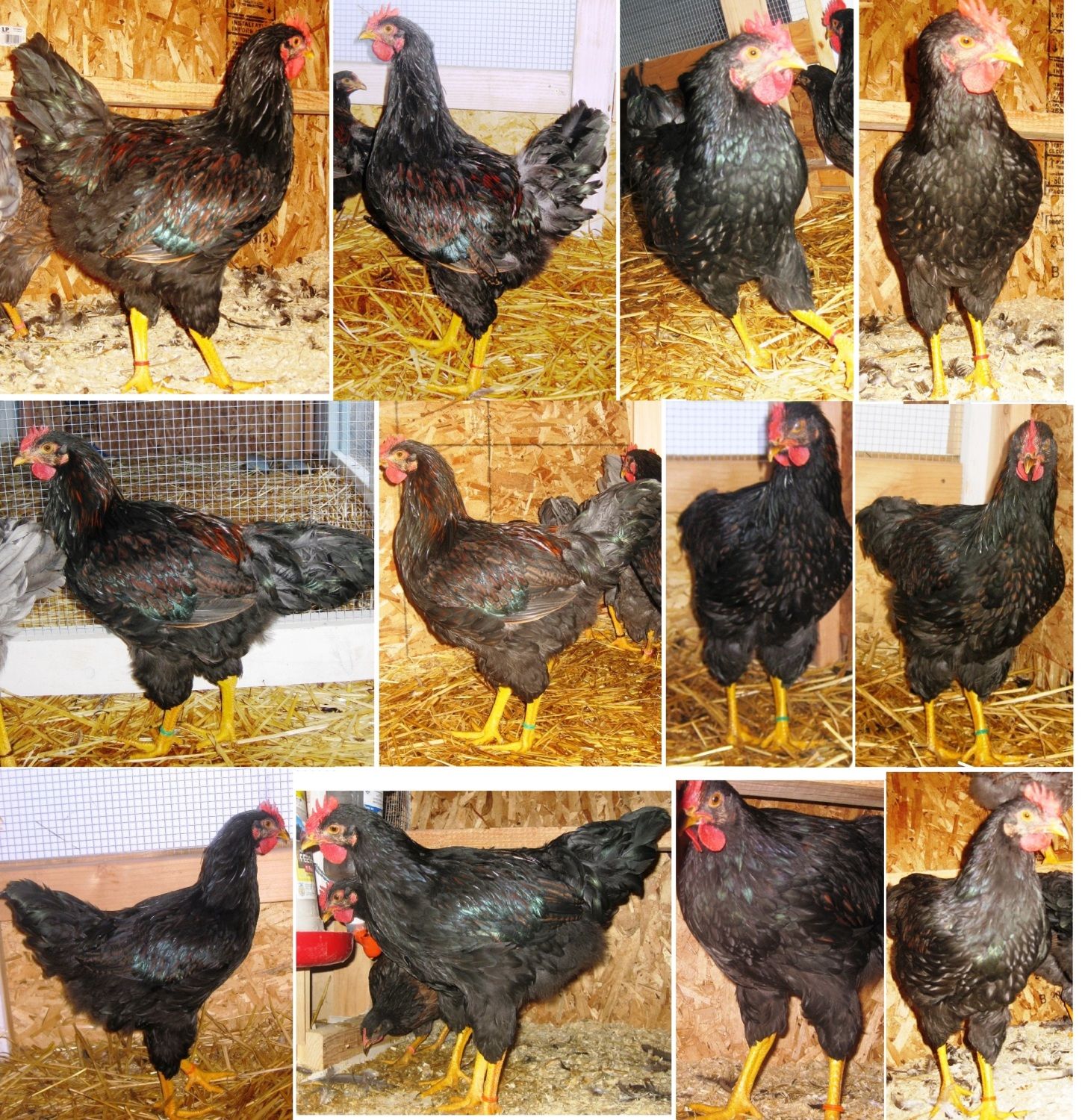This is a very interesting discussion. Thank you all and I hope it continues in the sense of clarifying what the standard is and why. I'm too new to chicken and Barnevelder breeding to add anything to the conversation, but I do appreciate those with knowledge sharing.
A few posts back Trisha asked how much lacing is required in order for the breast to be considered laced? My blues have quite a bit of lacing on the breast, but the blacks not so much. I know there is so much more than breast color in the standard. I wish there were pictures clearly showing the correct and incorrect standard for different features based on the American SOP for Barnevelders.
With that in mind, I really would love to have some feedback on the pictures below. If you could keep just one of the blacks which would you choose (Row 1, Row 2, or Row 3) and specifically what are the best features and what should be improved on them?

Same question for the blues - Row 1 or Row 2?

Thank you!
A few posts back Trisha asked how much lacing is required in order for the breast to be considered laced? My blues have quite a bit of lacing on the breast, but the blacks not so much. I know there is so much more than breast color in the standard. I wish there were pictures clearly showing the correct and incorrect standard for different features based on the American SOP for Barnevelders.
With that in mind, I really would love to have some feedback on the pictures below. If you could keep just one of the blacks which would you choose (Row 1, Row 2, or Row 3) and specifically what are the best features and what should be improved on them?
Same question for the blues - Row 1 or Row 2?
Thank you!
Last edited:



